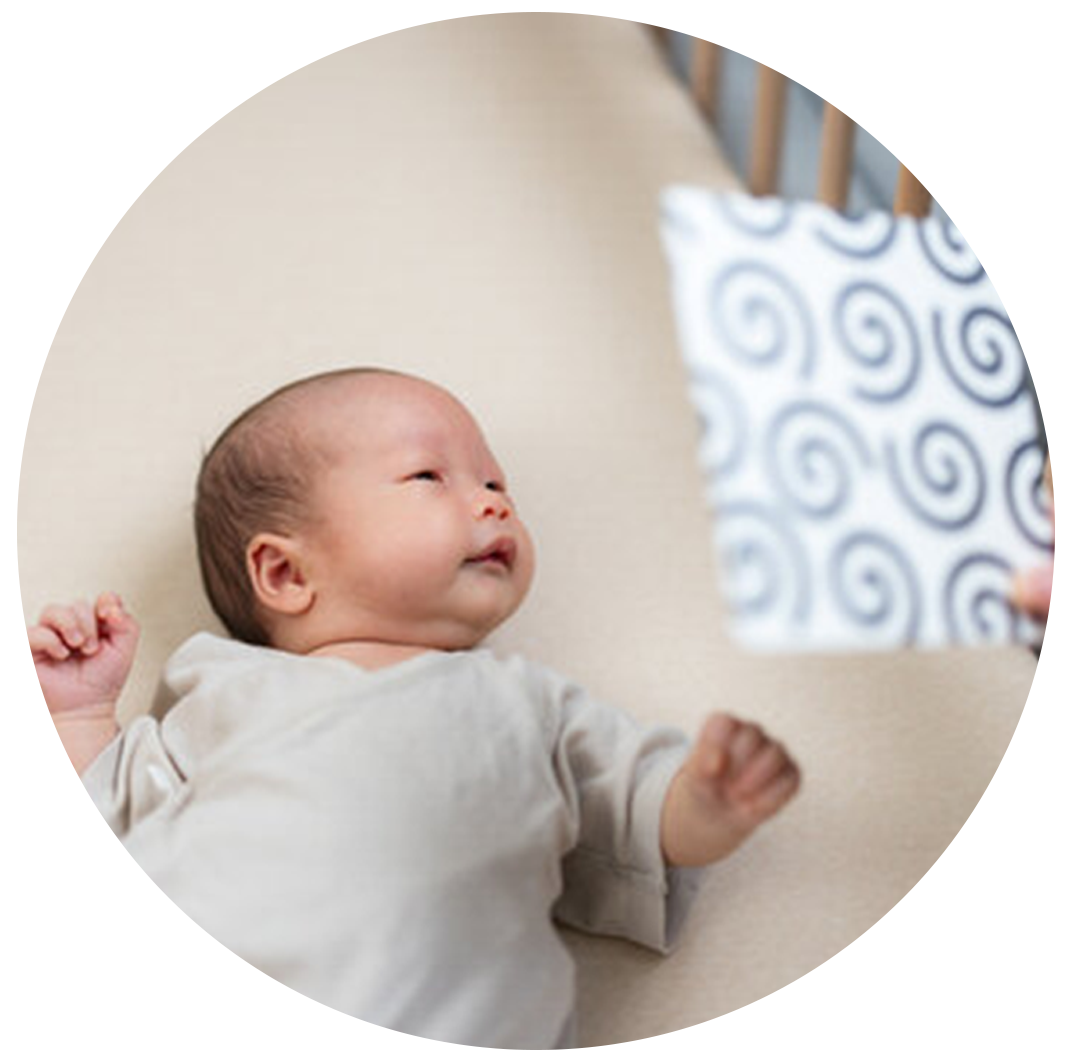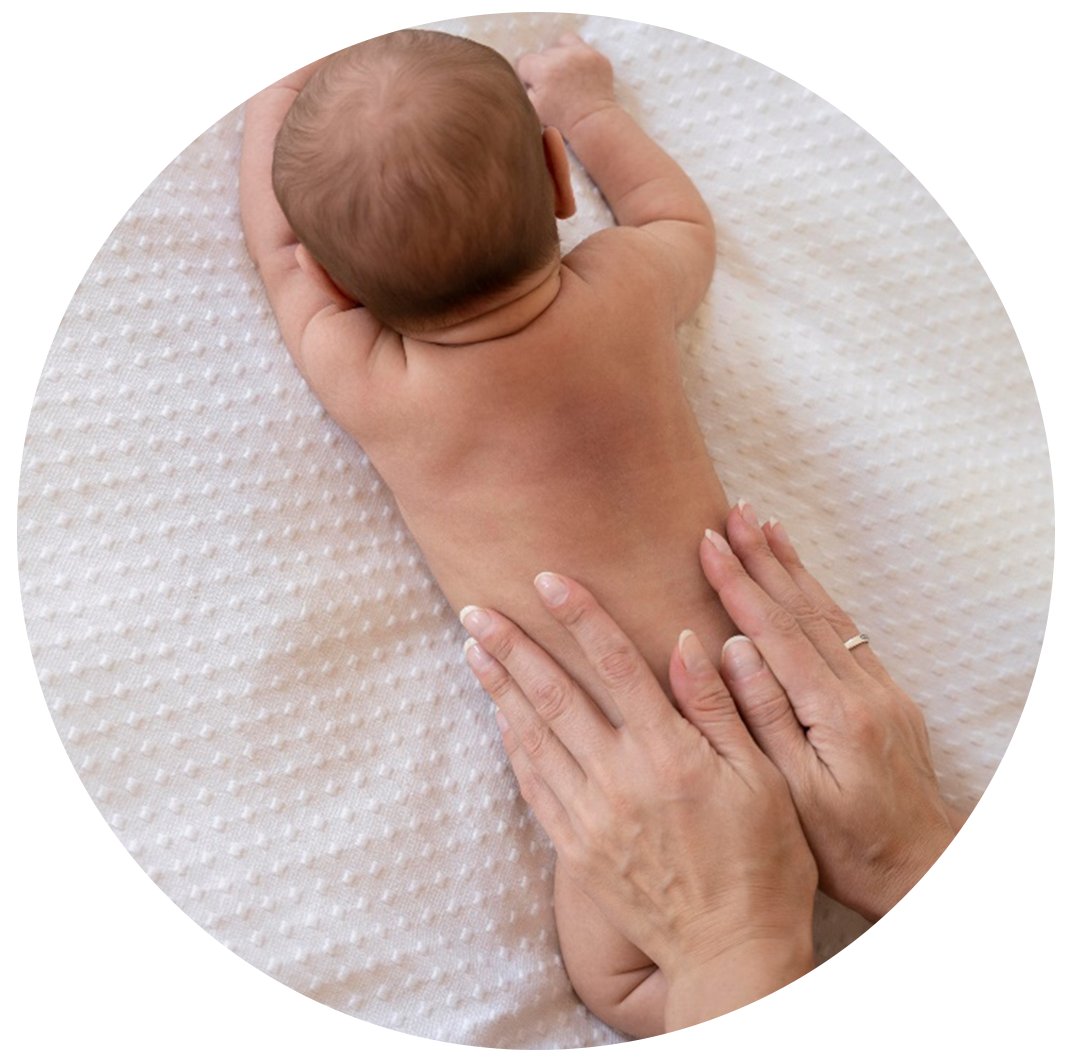Newborn Early Sensory Stimulation refers to the gentle, purposeful exposure of a newborn to different sensory experiences—such as touch, sound, sight, smell, and movement—to help support a baby’s physical, cognitive, emotional, and social development during the earliest stage of life.
It is the process of engaging a baby’s senses through safe and age-appropriate activities to help build early neural connections, promote cognitive growth, and encourage emotional bonding with caregivers.
Sensory input shapes how babies understand, respond to, and interact with the world.
It’s based on the scientific understanding that the newborn brain is rapidly developing and is highly responsive to sensory input—especially in the first 0–3 months.
- Cognitive development: help form neural connections in the brain/ brain development/memory formation/boosts sensory processing
- Sensory & Motor skills: supports sensory integration—how babies process and respond to the world./ motor coordination and spatial awareness/enhance muscle strength
- Emotional & Social Development: strengthen emotional bonding and secure attachment/ support emotional self-regulation over time/help babies start recognizing and responding to social cues/
- Promote language acquisition: introduce rhythm and sounds of speech/encourage listening and eye contact/lay groundwork for early communication
- Improves sleep patterns and feeding behaviour, reduce fussiness
Stimulating activities help newborns grow smarter, stronger, and more emotionally secure through gentle, loving, everyday interactions!
Newborns see best in high contrast. To support your baby’s early visual growth, the nanny gently introduces black-and-white cards featuring bold, high-contrast patterns. These specially designed visuals help stimulate your newborn’s developing eyesight, encouraging them to focus, track, and engage with their surroundings. Beyond visual development, this simple yet meaningful activity fosters eye contact and lays the foundation for facial recognition.
These early visual experiences also play a vital role in cognitive development, facilitating the infant’s ability to perceive, process, and interpret visual stimuli. Exposure to shapes, patterns, and contrasts provides foundational sensory input that promotes synaptic connectivity, neural pathway formation, and overall healthy brain maturation.
Through these early interactions, your little one begins to connect with the world in a safe, comforting, and loving environment.


To enrich your baby’s sensory experience, the nanny incorporates soft classical music into the daily routine. The gentle melodies stimulate early auditory pathways by promoting neural plasticity and helping the infant differentiate tones, patterns, and rhythm. These auditory exposures facilitate the maturation of brain regions involved in language processing, auditory discrimination, and cognitive function.
Additionally, the music helps regulate the autonomic nervous system, creating a calming effect that supports relaxation and restful sleep. Through this simple yet powerful practice, your baby is gently introduced to the beauty of the sound within a soothing environment, fostering both neurological development and emotional well-being.
With a gentle and loving touch, the nanny performs soothing massage strokes specially designed for newborns. This calming practice not only helps to ease colic and reduce discomfort but also supports healthy digestion and encourages more restful sleep.
The rhythmic, tender motions activate sensory receptors in the skin, enhancing tactile processing and fostering neural connectivity in the developing brain. Beyond the physical benefits, it also offers a sense of security and comfort, helping your baby feel more relaxed and at ease.
This quiet interaction nurtures emotional connection and contributes to your baby’s overall sense of well-being. Through consistent, gentle massage, your little one experiences the power of touch in a safe, caring environment.


As part of daily care, the nanny introduces tummy time in a gentle and supportive manner, ensuring the baby feels comfortable and secure throughout the activity.
This simple yet essential practice plays a critical role in early neuromuscular development by strengthening the baby’s neck, shoulders, and upper body muscles, laying a strong foundation for key motor milestones such as rolling over, crawling, and eventually sitting up.
Tummy time also stimulates the development of the vestibular and proprioceptive systems, which are crucial for body awareness, coordination, balance and spatial perception. It encourages the baby to explore movement and build confidence while being closely supervised in a calm, nurturing environment. Over time, this daily routine becomes a valuable opportunity for both physical growth and joyful interaction.
Sensory stimulation is important for newborns because the first year of life is a critical period for brain growth and sensory development. Gentle stimulation helps a baby’s body and brain learn how to respond to the world around them.
Early sensory stimulation helps:
- Strengthen brain development and neural connections
- Develop senses
- Improve motor skills, coordination, and muscle tone
- Enhance language and auditory learning
- Promote emotional bonding and security
- Support better sleep and overall growth
You can begin simple, gentle activities from birth (e.g., talking, soft music, gentle touch). More structured stimulation, such as tummy time and sensory exercises, typically starts from 2–4 weeks old, depending on the baby’s health and development.
Most healthy newborns can participate. Babies with medical conditions or premature babies may need a customised plan approved by their doctor.
At birth, a baby’s vision is not fully developed—they can see, but everything is blurry, and they rely heavily on faces and high-contrast objects.
What Newborn Eyesight is Like
- Distance: A newborn can see clearly only about 8–12 inches (20–30 cm) away (perfect for looking at a parent’s face during feeding).
- Clarity: Vision is blurry, and they can’t see fine details yet.
- Color: They mostly see black, white, and shades of gray at birth. Colors like red start to become noticeable after a few weeks.
- Focus & Tracking: In the first month, they can briefly focus on objects but can’t track smoothly yet. By 2–3 months, they start following moving things with their eyes.
- Preference: Babies are naturally drawn to faces and high-contrast patterns (like stripes or bold shapes).
Newborn sensory stimulation doesn’t have a fixed “end date,” but the approach changes as your baby grows.
Here’s a guide:
From Birth to 6 Months
- Gentle stimulation (talking, singing, tummy time, massage, showing high-contrast toys)
- Short sessions, 5–15 minutes once or twice daily, based on baby’s mood
6–12 Months
- More active play (rolling, reaching, crawling games, colorful toys, music, simple peekaboo)
- Can be 15–30 minutes a few times daily, broken into short activities
After 1 Year
- The programme transitions into toddler learning and play activities (stacking toys, problem-solving games, music, and simple words).
- Sensory stimulation becomes part of daily play and interactions rather than a “structured” programme.

